This article describes how to access the latest updates for Windows 11 installed on your computer.
Microsoft releases updates and patches for Windows every month, which are beneficial for your computer. However, it can often be unclear when each update was installed. This lack of clarity can make it difficult to address issues that arise after a Windows update.
Checking the recent updates in Windows 11 can help you identify which updates have been installed on your computer, particularly if you are experiencing problems after an update. It also lets you see which updates fall into various categories, such as feature updates, quality updates, and definition updates.
View Windows 11’s most recent updates
You can check the latest Windows updates in the System settings. This section allows you to see which updates were installed recently.
Windows 11 has a centralized location for the majority of its settings. Everything can be done, from system configurations to creating new users and updating Windows from its System Settings pane.
To get to System Settings, you can use the Windows key + I shortcut or click on Start ==> Settings, as shown in the image below:

The Windows Settings pane should resemble the image below. In Windows Settings, click on Windows Update and select Update History from the right pane of your screen, as depicted in the image below.
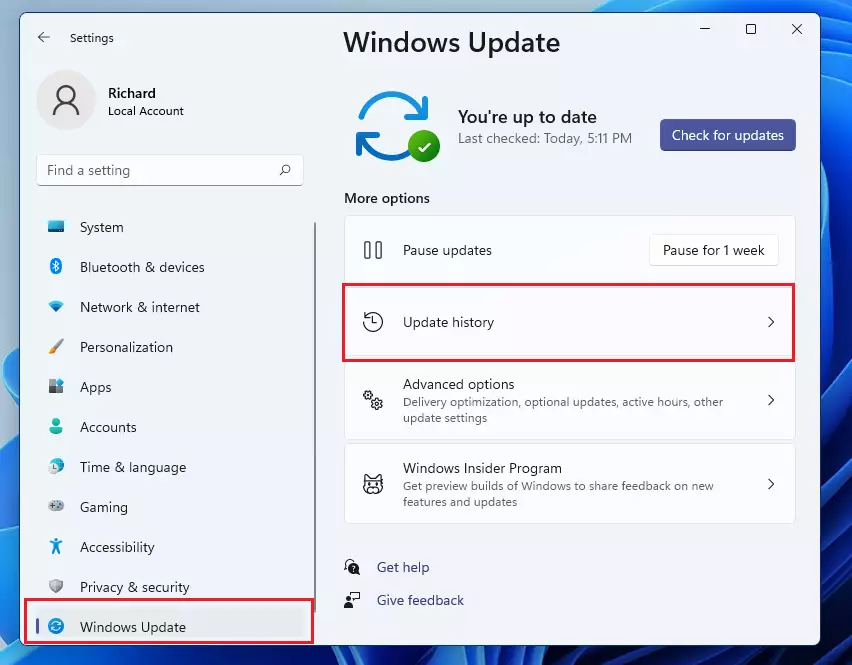
On the Update history settings pane, you will see Windows update history grouped in the category.
- Feature Update = technically new versions of Windows OS
- Quality Updates = also referred to as ( “cumulative updates” or “cumulative quality updates”) are the mandatory updates released every month through Windows Update.
- Definition Updates = Microsoft Defender antivirus definitions
- Other Updates = updates for drivers and devices that are available through Windows Update
You can expand each group and see which recently installed updates in each category.
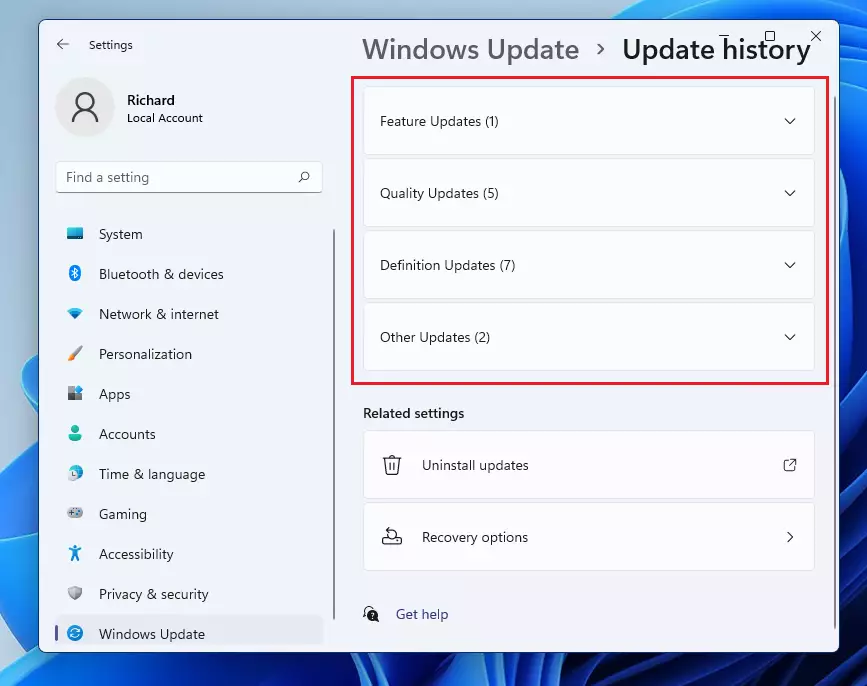
You can view all recently installed updates by expanding a category.
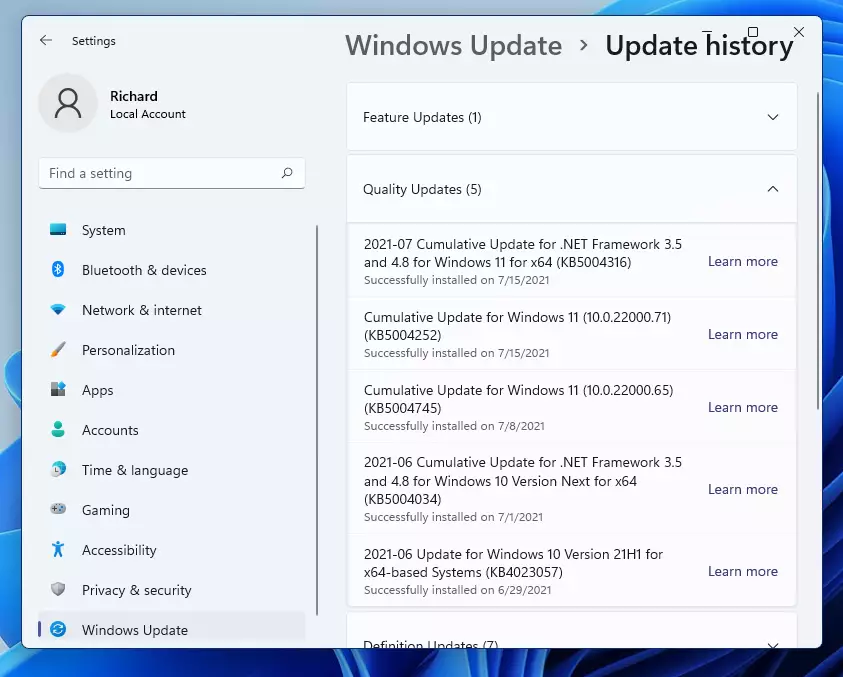
To expand each category, click on it. You’ll find a list of recently installed updates on your computer.
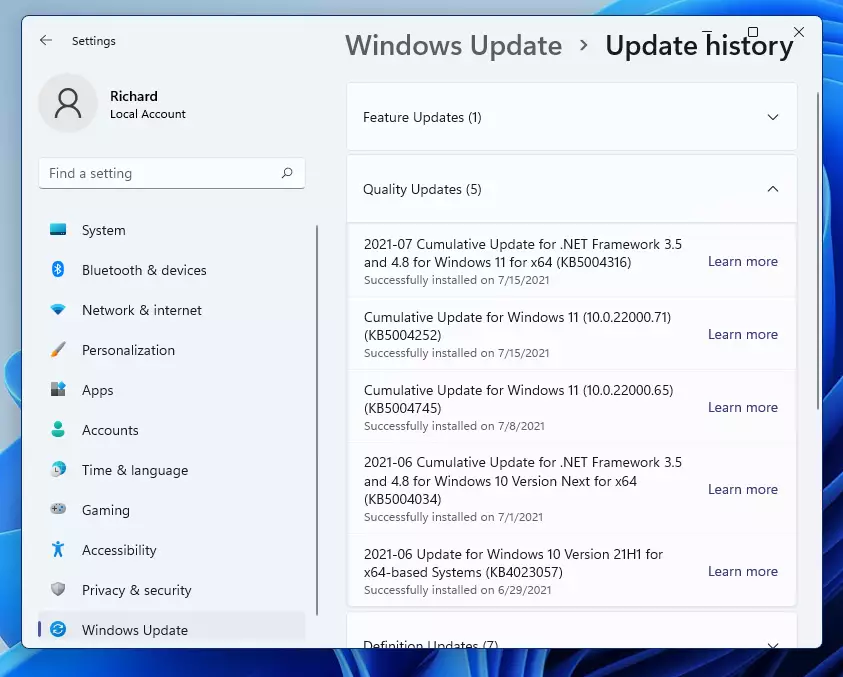
Uninstall Recent Windows Updates in Windows 11
Now that you know wish updates were recently installed, use the steps below to remove or uninstall Windows updates. You can only uninstall from the Windows Control Panel Program and Feature pane.
On the Windows update history pane, under Related settings, click Uninstall updates as highlighted below in the image.
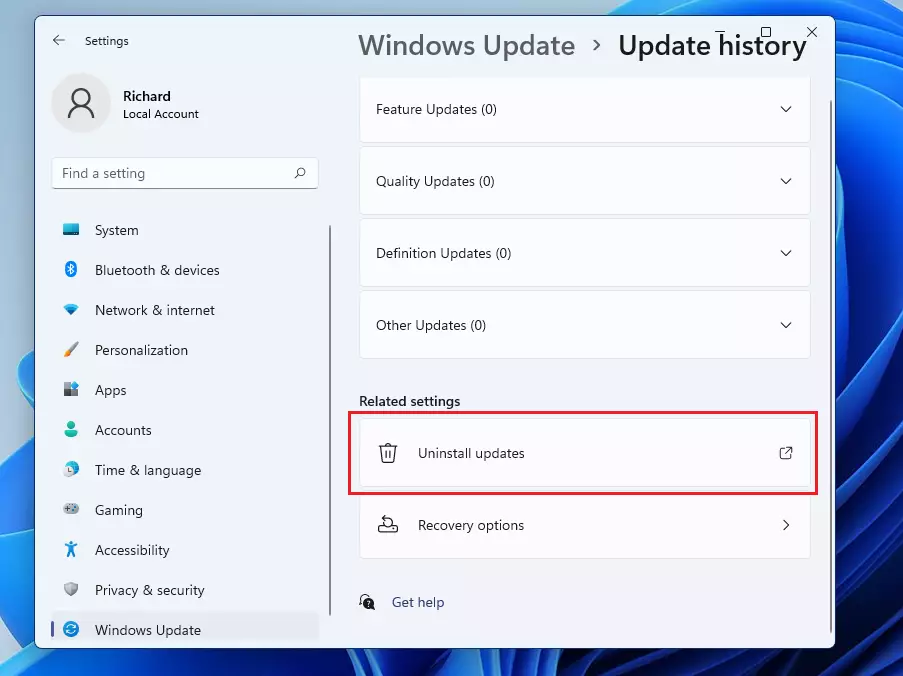
That will take you to the Control Panel pane. Select the update you want to remove or uninstall and click the Uninstall button.
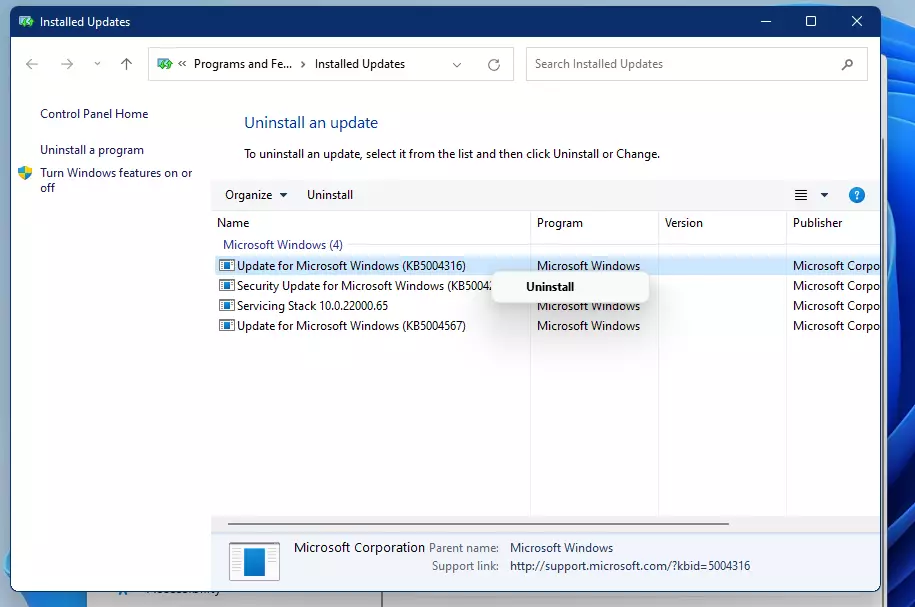
That should do it!
Conclusion:
- Accessing recent updates in Windows 11 is crucial for troubleshooting issues that may arise post-update.
- Understanding the categories of updates—Feature, Quality, Definition, and Other—can help you identify specific changes made to your system.
- You can easily view installed updates through the System Settings pane, providing a clear history of modifications to your operating system.
- If necessary, you can uninstall problematic updates via the Control Panel, ensuring your system remains stable and functional.
- Regularly monitoring updates and knowing how to manage them contributes to maintaining the overall health of your computer.

Leave a Reply Cancel reply